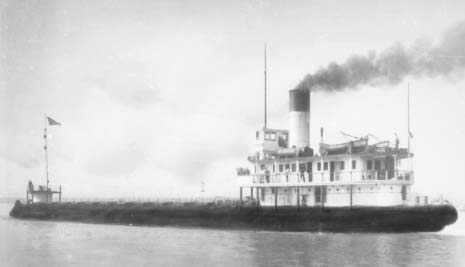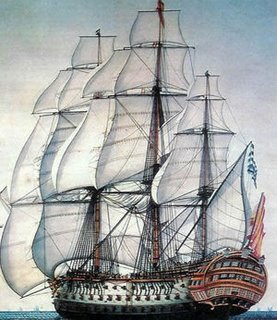I heard the news of a young woman being swept overboard from a tall ship by a rogue wave last Saturday, but waiting, hoping, and praying for the news of successful rescue to no avail.
I noticed that Montreal Gazette carried an article entitled “
A tragic death at sea” this morning.
I guess that pretty much concluded the case.
I was just called by the science reporter of Toronto Star, Peter Calamai, who got interested in writing about rogue waves because of this case.

The tall ship is the Barque Picton Castle, today their web site carried the announcement that starts in part as:
A terrible loss
On Friday, December 8, the Barque Picton Castle encountered gale force conditions while on passage from her homeport of Lunenburg, Nova Scotia, to the West Indies. At approximately 2200, the ship's decks were overwhelmed by an unusually large wave and crew member Laura Gainey of Montreal, Canada, was swept overboard. The ship immediately stopped, deployed life saving gear, and employed all of its extensive emergency and communications equipment in the call for assistance.
Search and rescue efforts began immediately. Assisted by fixed wing aircraft from the Canadian and United States Coast Guard, as well as two merchant vessels, the Picton Castle, her captain and crew scoured the Atlantic for four days without respite in hopes of finding their shipmate. Their search was suspended December 12.
So it’s all a matter that “the ship's decks were overwhelmed by an unusually large wave” which is clearly a case of encountering freaque waves. But the case took on colossal world wide media attention when it was noted that the young woman, who was initially reported only as “a volunteer crew member in her 20s,” turned out to be the daughter of the hockey legend Bob Gainey. As the Montreal Gazette comments:
The highly public search for Laura Gainey in the waters of the Atlantic, the high-level interventions to make sure that everything possible was done, the rehashing of the family's history in the media - all these factors marked this tragedy out for the world's attention. But in another sense this sad case is just an installment in the incalculable, unceasing toll the sea has exacted all through the history of seafaring.
Every parent will understand the impact of the sudden, arbitrary loss of Laura Gainey on her family and friends. Because her father Bob Gainey is so well known as general manager of the Montreal Canadiens, the story of her being washed overboard from a sailing ship has made headlines, here and around the world. But for those personally close to Laura, the emotional shock is in no way reduced by being shared so widely.
Indeed this is just another case among all the “unceasing tolls the sea has exacted all through the history of seafaring” from freaque waves, only this time it’s happened to a notable person. The Gazette article fittingly concluded with:
Having a celebrity in the family can multiply the newsworthiness of a particular tragedy. But the rogue wave of loss and agony that survivors must endure is of the same magnitude in every sudden death.
I too wish to extend my prayer and sympathy to the Gainey family. I must admit that not being a Hockey fun, I did not know who Bob Guiney was previously. As a freaque wave researcher I would also like to make note of two further points: First, it was reported that the young lady was “in a safe area on deck when the freak wave swept across and violently rocked the vessel,” so it it is self-evidently clear that whenever or whereever freaque waves hit, there is really no place on deck that can be considered as safe! Second, this freaque wave encounter took place in the purlieus of Gulf Stream, so one of the renowned theory that suggests freaque waves can occur when storm waves confront against a strong oncoming surface current is likely to have actualized. The Agulhas current off southeast coast of South Africa in the South Indian Ocean is famed for this kind of freaque wave occurrences. Their counterpart in the Western Pacific is the Kuroshio current that's starting off the east coast of Taiwan and flowing northeastward past Japan. But having a strong counter surface current is only one of the possible causes for freaque waves. Freak waves have known to have happened in plenty of other places in the world oceans where no known counter currents to have ever existed (e.g. the North Sea.)














